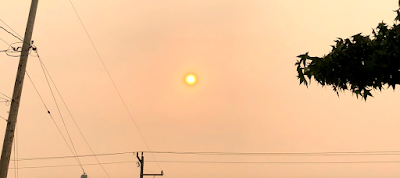Reflections on Public Spaces #Istiklal #Istanbul #Turkey #Turkiye
Riot Police Near Galatasaray High School on October 19 |
Istiklal is undeniably the tachycardic heart of contemporary Istanbul and constitutes a veritable geography of Turkey's near term aspirations as it wends its way from Tünel to the now infamous Taksim Square. It is both maximally modern and consumerist, with its many fashion boutiques for well-known European brands, trendy cafés, and jetset-baiting clubs, as well as resolutely traditional, with its mosques, Orthodox churches, and countless chestnut vendors. Most recently, it served as one of several stages in the brutal political theater of the Gezi Park Protests. A natural gathering point, protesters assembled here in June prior to marching on Gezi Park, where tear gas and water cannons awaited them.
Those protests ended in July, so imagine my reaction ("Shit, shit, shit, shit, shit!") when I happened upon a unit of riot police on Istiklal just west of Galatasaray High School last Saturday night. I have no idea what they were doing there. Certainly, there was no apparent criminal activity underway. There were also no public events that might arguably require the, err, deterrent effect of helmeted, shielded, and armed police. Regardless, they were there, idling, smartphones perched over the tops of their shields (I think I saw one of them playing Candy Crush).
The experience was almost stereotypically dystopian. For me, someone who hasn't been involved in political protests with police presences, it called to mind scenes from films like Akira (the rain helped) and footage from some of the worst Occupy protests.
Abstract all of this one level further and you arrive at the steps of the 13th Istanbul Biennial in an annex of the Istanbul Modern in the Bowery-like Karakoy neighborhood, which we visited the preceding Thursday. The theme of the show, announced with seeming prescience well ahead of the Gezi protests in January 2013, was "the power of public space in terms of social struggle, art and politics." In a sense, the events of Gezi changed the direction of the Biennial, which sought to explore the response of artists to, for instance, the recent redistribution of oil-rich land in the Ukraine and Romania, and the gentrification of Istanbul's Sulukule neighborhood, which uprooted the city's Roma population. But it's perhaps more accurate to say that the Gezi protests broadened the theme of the politicization of public space to consider an additional but related topic, what Fulya Erdemci, the Biennial's talented curator, calls "public alchemy." This refers to the transformation she witnessed as non-violent protesters overcame the asymmetrical relationship with government forces to deliver their message with "wit, humor and creativity." Part of this transformation can be seen in the protest's ability to sustain itself for as long as it did at the situs of the dispute in Gezi Park, but Erdemci is also contemplating the crowd's creativity and resourcefulness in terms of how it fanned out from Gezi Park to hold gatherings and discussions in other public parks in other neighborhoods. It's important to take away this narrative of triumph from the Gezi protests, especially given that western media was so ready to use it to find shortcomings in contemporary Turkish society. Yes, the Turkish government is flawed, but there is a vibrant, informed, and inspired civil society that is ready and willing to meet these challenges head on.
I was really floored by the consistency and quality of the collection and adherence to the theme. In general, contemporary art is rarely curated this well, and the thematic pairing of art and politics is frequently pulled off poorly (see this brilliant write up of Ai Wei Wei). Highlights include Halil Altindere's film "Wonderland," a brilliant send-up of NWA-style hip-hop videos focused on the above-mentioned disenfranchisement of Istanbul's Roma population, and Zbigniew Libera's New Histories series of staged photographs, which depict a post-apocalyptic future of liberation and new possibilities and, in doing so, really frustrate traditional depictions of post-apocalyptic societies.
Libera's work in particular continues to stick with me. The far-future tribalism of his photographs is really compelling, as though he thought to himself, "Hey, what if Burning Man were everyday life? That could actually be pretty cool." I think it's helpful for me to process the presence of the riot police through these narratives of triumph and unexplored futures, rather than in terms of the testicle-ascending impact it had at the time. Authoritarian governments, senselessly brutal as they can be, are temporary things, ultimately; social and political evolution, even revolution, persists forever.

Comments
Post a Comment